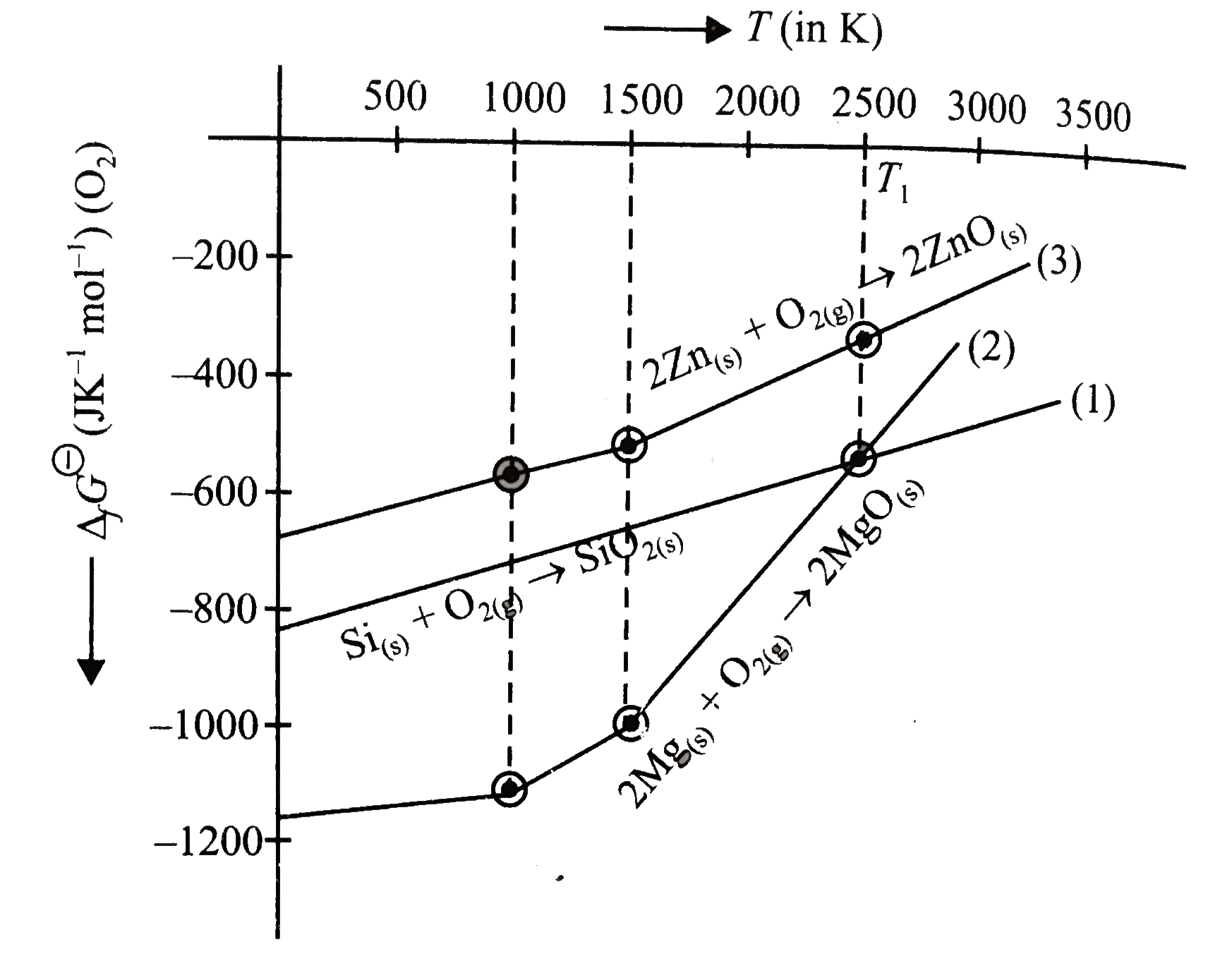Explain the observations from the Ellingham diagram.
Text Solution
1.For most of the metal oxide formation ,the slope is positive .It can be explianed as follows Oxygen gas is consumed during the formation of metal oxides which results in the decrease in randomness.Hence ΔS becomes negative and it makes the term ,TΔS positive in the straight line equation.
2.The graph for the formation of carbon monoxide is a straight line with negative slope.In this case ΔS is positive as 2 moles of CO gas is formed by the consumption of one mole of oxygen gas.It indicates that CO is more stable at higher temperature.
3.AS the temprature increases ,generally ΔG value for the formation of the metal oxide become less negative and becomes zero at a particular temprature.Below this temprature,ΔG is negative and the oxide is stable and above this temprature .Below this temprature,ΔG is negative and the oxide is stable and above this temprature ΔG is positive.This general trend suggests that metal oxides become less stable at higher temprature and their decomposition becomes easier.
4.There is a sudden change in the slope at a particular temprature for some metal oxides like MgO,HgO. This is due to the phase transition (melting or evaporation).
|
Topper's Solved these Questions
- METALLURGY BOOK - FULL MARKSCHAPTER - METALLURGY EXERCISE - Additional questions - ( 3 MARK QUESTIONS )-Answer the following questions.
13 Videos
- IONIC EQUILIBRIUMBOOK - FULL MARKSCHAPTER - IONIC EQUILIBRIUMEXERCISE - ADDITIONAL QUESTIONS (5 MARK QUESTION)
15 Videos
- ORGANIC NITROGEN COMPOUNDS BOOK - FULL MARKSCHAPTER - ORGANIC NITROGEN COMPOUNDS EXERCISE - ADDITIONAL QUESTIONS (5-MARK QUESTIONS)
14 Videos
Similar Questions
Knowledge Check
Which of the following observations made from the Ellingham diagram is wrong ?
AThe slope of the curves of the formation of metal oxides is negativeBEach curve is straight line except when some change takes place in phase (S−1or1→g)CIn the case of less reactive (or less electroposities metal like AgandHg,ΔGӨ become positive at relatively low temperatures .DAny matel oxide with lower value of ΔGӨ is more stable than a metal oxide with higher ΔGӨ .Which of the following is not correct observation on Ellingham diagram ?
AA metal can reduce the oxide of other metal which lies above it in Ellingham diagram .BCO is more effective than C as a reducing agent below 710∘CCΔG∘ of metal oxides is higher than that of CO2 hence oxidation of metal suphides to oxides is not favourable.DNeed for conversion of metal sulphide to metal oxide before reduction can be explained thermodynamically.Which of the following is not correct observation on Ellingham diagram ?
AA metal can reduce the oxide of other metal which lies below it in Ellingham diagram .BCO is more effective than C as a reducing agent below 710∘CCΔG∘ of metal oxides is higher than that of CO2 hence oxidation of metal suphides to oxides is not favourable.DNeed for conversion of metal sulphide to metal oxide before reduction can be explained thermodynamically.

 .
.